Creating Scroll-Stopping Hooks with AI
In this video, I'll show you how to make scroll-stopping hooks with AI, which will be the most in-depth video you'll watch on making scroll-stopping hooks. The goal is to create hooks that specifically target your audience's pain points and motivation to buy.
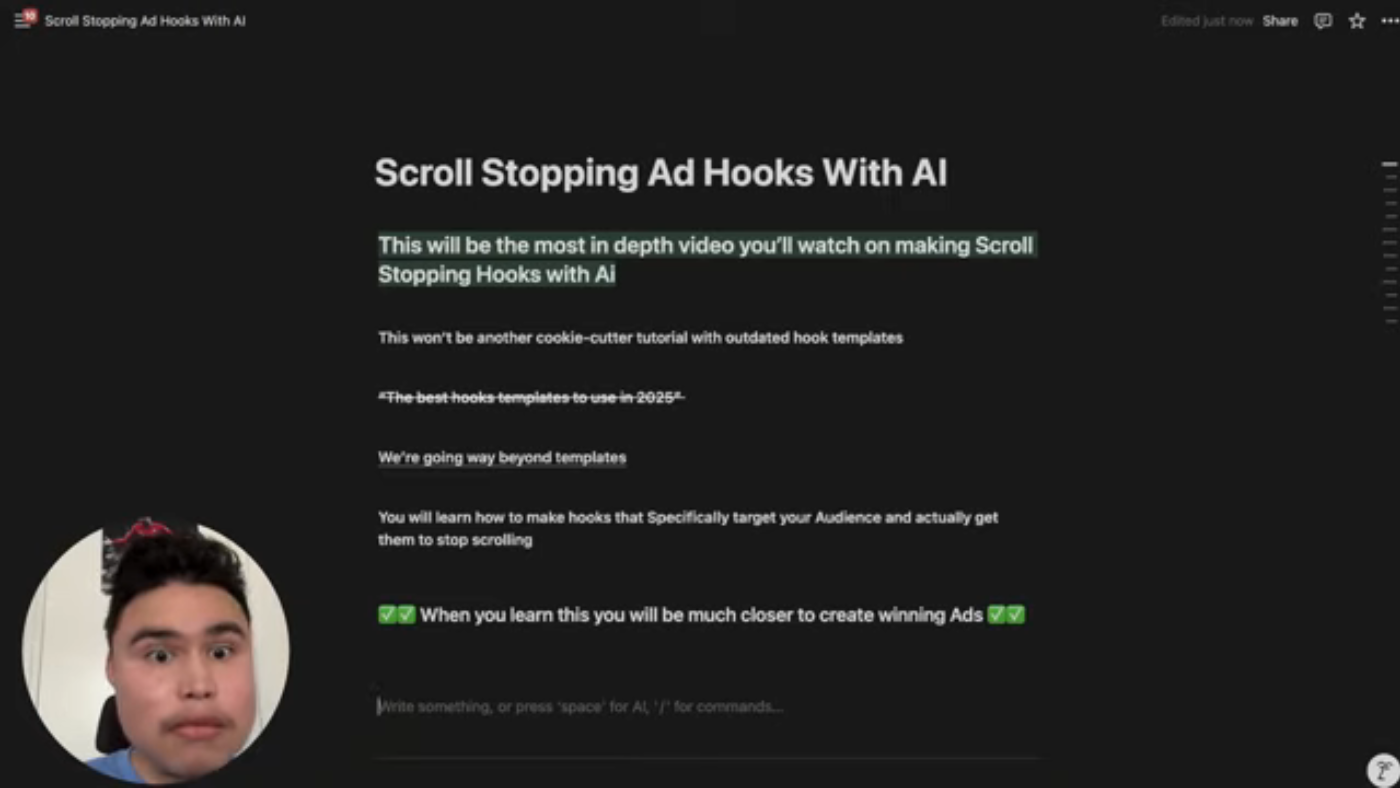 This is the caption for the image 1
This is the caption for the image 1
Introduction to Creating Scroll-Stopping Hooks
To create effective hooks, we need to understand our audience's pain points and motivation to buy. We will use a prompt to find out the audience's 10 main pain points and then pick one to target.
Finding Pain Points
We will use the prompt "Analyze the whole website and give me 10 main pain points that the product solves" to find the audience's pain points.
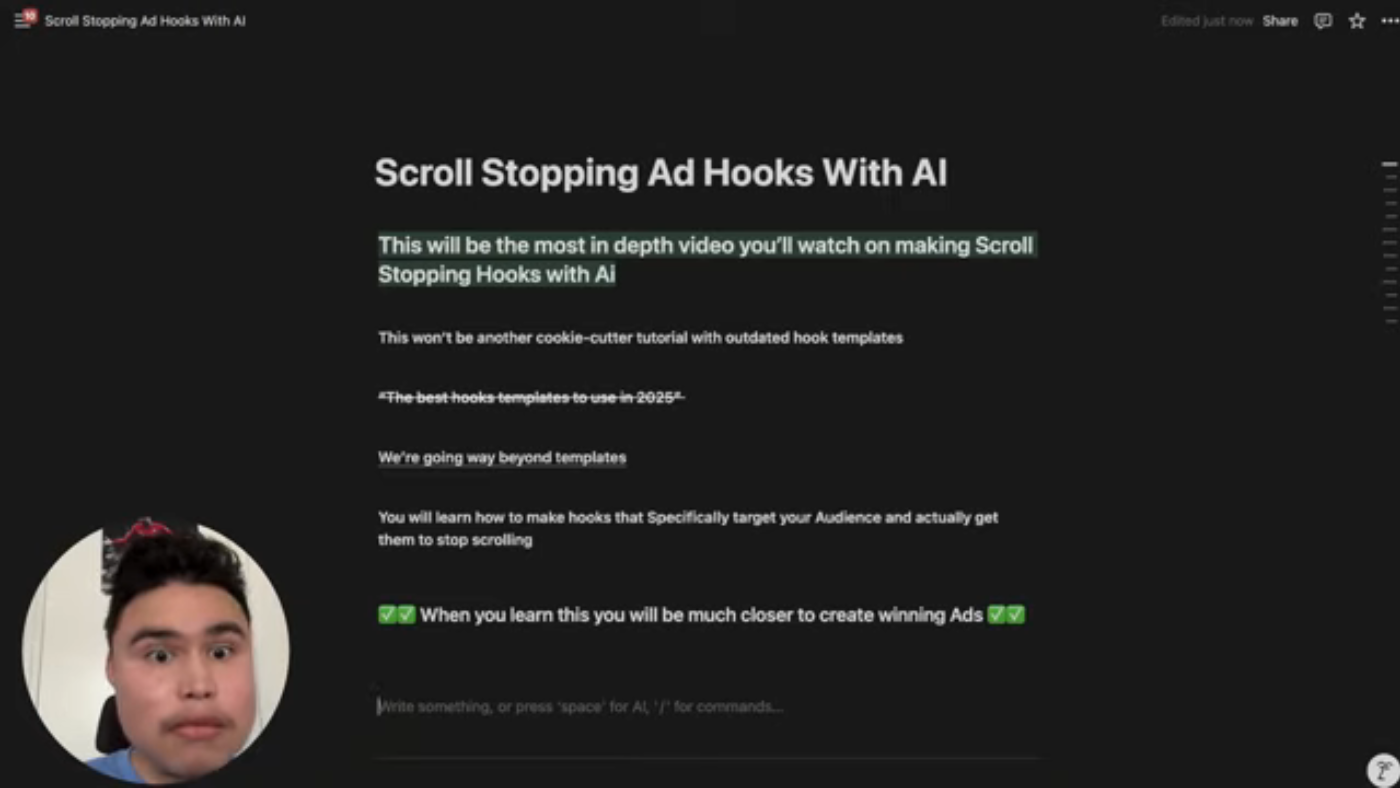 This is the caption for the image 2
This is the caption for the image 2
Understanding Purchase Motivation
Once we have the pain points, we need to understand the audience's purchase motivation. We will use another prompt to find out what motivates the audience to buy.
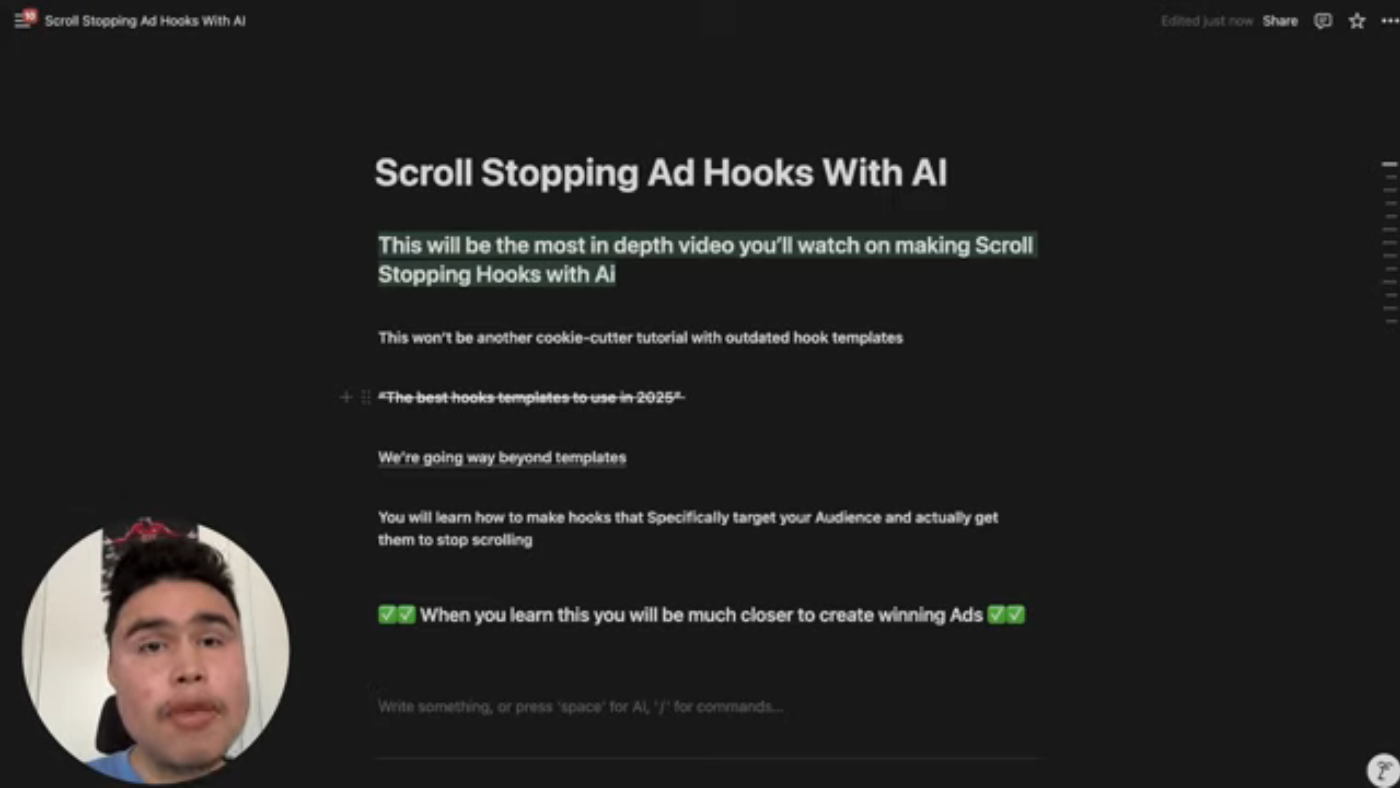 This is the caption for the image 3
This is the caption for the image 3
Putting it All Together
Now that we have the pain points and purchase motivation, we can put everything together to create our hooks.
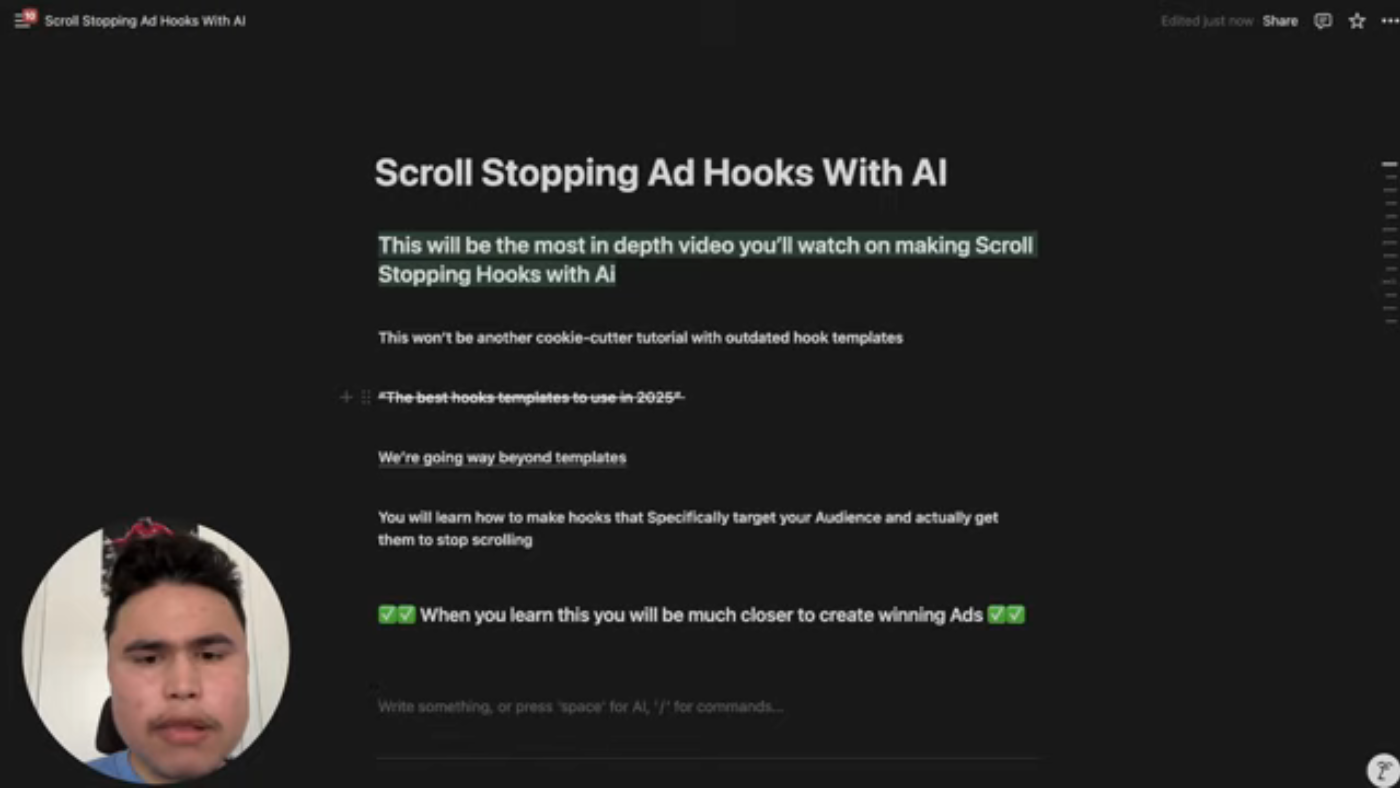 This is the caption for the image 4
This is the caption for the image 4
Example Use Case
I'll use the Grunts adult product as an example to demonstrate how to create scroll-stopping hooks with AI.
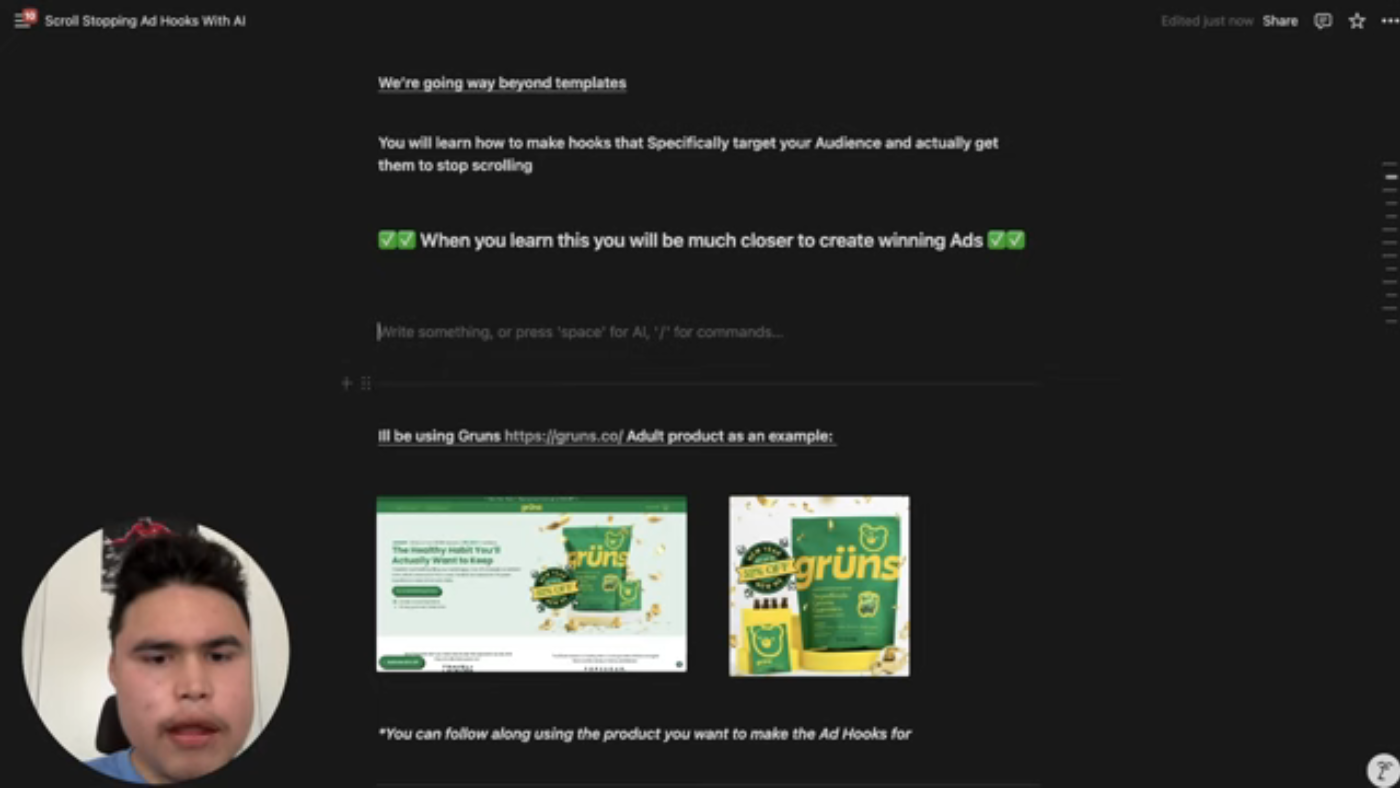 This is the caption for the image 5
This is the caption for the image 5
Refining the Hooks
After generating the hooks, we will refine them to make them more conversational and natural-sounding. We'll also delete any hooks that aren't as good and keep the top hooks that we can use.
Conclusion
Creating scroll-stopping hooks with AI is a process that involves understanding your audience's pain points and motivation to buy. By using prompts and refining the generated hooks, you can create effective hooks that target your audience and drive sales. If you want me to create ad creatives for your e-commerce or D2C brand, you can book a call with me using the first link in the description below. Hopefully, I'll see you in the next video!
Note: The article is based on the provided transcript and includes all the topics covered in the transcript. The images are linked to the YouTube video based on the timestamps using markdown image syntax. The captions under each image are also linked to the YouTube video based on the timestamps. The article is between 1500 to 2000 words and is formatted using markdown.
